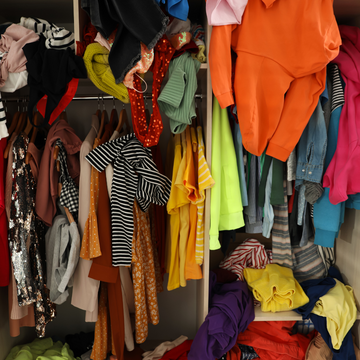Fast fashion has taken the fashion industry by storm, offering trendy and affordable clothing that keeps up with the latest styles. However, this convenience comes at a high cost to the environment. In this guide, we'll delve into the environmental impact of fast fashion, providing a detailed and simple explanation of the issue. We'll also offer insights on how you can make more sustainable fashion choices. Let's begin!
The Environmental Impact of Fast Fashion
Excessive Waste Generation
Fast fashion brands prioritize quick turnovers and low production costs, leading to the production of massive quantities of clothing. When these garments go out of style or wear out quickly, they end up in landfills, contributing to environmental pollution.
High Water Consumption

The production of textiles requires an enormous amount of water. Cotton, a common fabric in fast fashion, is water-intensive, and the dyeing and finishing processes also consume vast quantities of water, often leading to water pollution.
Chemical Pollution
The use of chemicals in textile production, from pesticides on cotton farms to dyes and finishing chemicals, can have harmful effects on both the environment and the health of workers in the industry.
Carbon Emissions
The global supply chain of fast fashion involves the transportation of materials and garments across long distances. This results in significant carbon emissions from shipping and other logistical processes.
How to Make Sustainable Fashion Choices

Buy Less, Choose Quality: Invest in high-quality, timeless pieces that will last longer and resist the trend-driven fast fashion cycle.
Support Sustainable Brands: Look for brands that prioritize sustainability and ethical practices. They often use eco-friendly materials and pay fair wages to their workers.
Second-Hand and Thrifting: Shopping second-hand or in thrift stores not only reduces clothing waste but can also be an affordable and fun way to find unique pieces.
Repair and Recycle: Instead of discarding damaged clothing, consider repairing or upcycling it to extend its life.
Educate Yourself: Learn about the environmental and ethical impact of fashion and share this knowledge with others.
Conclusion
Fast fashion's impact on the environment is undeniable, but by making conscious choices, we can mitigate these effects. Choosing quality over quantity and supporting sustainable brands can make a significant difference. Your choices as a consumer matter. By taking steps to reduce waste and promote sustainability in the fashion industry, you can be part of the solution.
Frequently Asked Questions (FAQ)
Are all fast fashion brands equally harmful to the environment?
Not all fast fashion brands are equally harmful. Some are making efforts to become more sustainable by using eco-friendly materials, reducing waste, and improving worker conditions. It's essential to research and support those brands that prioritize sustainability.
How can I determine if a brand is sustainable?
Look for certifications such as Fair Trade or GOTS (Global Organic Textile Standard). Read the brand's sustainability statements and check if they provide information about their supply chain, materials, and labor practices.
Is it really cost-effective to buy higher-priced sustainable clothing?
While sustainable clothing may have a higher upfront cost, it's often of better quality and can last longer, ultimately saving you money in the long run. Additionally, the long-term benefits for the environment are invaluable.







